|
Copyright, Attention: This website and its contents contain intellectual property copyright materials and works belonging to the National First Ladies’ Library and Historic Site and to other third parties. Please do not plagiarize. If you use a direct quote from our website please cite your reference and provide a link back to the source.
First Lady Biography: Helen Taft
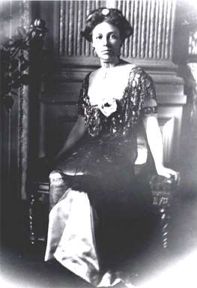 HELEN LOUISE "NELLIE" HERRON TAFT
Birth:
2 June, 1861
Cincinnati, Ohio
She was called "Nellie" from childhood on. The nickname served as a further distinction from her daughter Helen.
As First Lady, she nevertheless signed correspondence to non-family members as "Helen H." In naming her only daughter after herr, the family also made the distinction with her mother by calling the child "Helene".
Father:
John Williamson Herron, born 10 May 1827, Shippensburg, Pennsylvania; Lawyer, district attorney, Miami University board of trustees chairman; died 4 August 1912, Cincinnati, Ohio. Although he was the law partner of one future President (Rutherford Hayes) and a fellow college student with another (Benjamin Harrison), John Herron never reached their level of financial success and professional recognition because of his need to earn a constant and consistent salary as an attorney to support his large family. He did live to see his daughter become First Lady and visited her in the White House, attending the first of her innovative public music concerts at the Tidal Basin in 1909. He died during the contentious 1912 election, when his son-in-law, the incumbent President was fighting a political battle against former President Theodore Roosevelt.

Mother:
Harriet Collins Herron, born 15 September, 1833, Lowville, New York; married 7 March 1854, Cleveland, Ohio; died 3 January 1901, Cincinnati, Ohio. Both the daughter and the sister of U.S. Congressmen, she was ambitious for social prestige and pressed her husband to provide more of an income to maintain a higher status for their daughters. She later developed a platonic, but affectionate relationship with former President Hayes.
Ancestry:
Irish; English; Helen Taft's paternal great-great grandfather, Francis Herron emigrated from County Wexford, Ireland to Pequa Valley, Pennsylvania. Her maternal great-great-great-great-grandfather, John Collins, Jr. immigrated to Boston from Bramford, Suffolk County, England in 1645. In the next generation, the family migrated to Massachusetts, and in the next, to New York State, where Helen Taft's mother was born and raised, and from where her grandfather, Ela Collins, and uncle, William Collins, were elected to serve in the U.S. House of Representatives.
Birth Order and Siblings:
Fifth of ten children; seven sisters, two brothers; Emily Herron Parsons (1856-1931), unnamed infant sister (1857) Jane "Jennie" Herron Anderson (1858-1930), second unnamed infant sister (1860) Maria Herron (1864-1954), William C. Herron (1864-1922), John W. Herron (1870-1949), Eleanor Herron More (1874-1931), Lucy Herron Laughlin Lippitt (1879-1961)
Physical Appearance:
Slight build; medium height; brown hair; brown eyes
Religious Affiliation:
Raised Presbyterian; joined Episcopalian Church
Education:
Miss Nourse School, Cincinnati, Ohio, 1866-1879: From the age of six until ten, Nellie Herron was enrolled in the "primary department" and had weekly lessons in history, mythology and elemental science, along with the basics of reading, writing and arithmetic. During these years, her lifelong love of music was also borne out of lessons from George Schneider from the Cincinnati Music School, who taught at the Nourse School. When she was eleven years old, Nellie Herron entered the "high department" and was additionally taught English literature, two branches of natural sciences, French, German, Latin and Greek. University of Cincinnati, Cincinnati, Ohio, 1881: Nellie Herron enrolled in two classes in the autumn term, studying German and chemistry.
Occupation Before Marriage:
After her education, Nellie Herron found employment as a teacher at two local private schools, In the spring of 1882, she taught French four hours a week for two months, at Madame Fredin's School, substituting for a teacher who had left the school. She earned a total of fifty dollars. In the fall of 1882 and the spring term of 1883, she became a regular class instructor of a grammar school level class at the White-Sykes School for Boys, Cincinnati, Ohio, which had just opened.
It was during a visit to the White House in the winter of 1877, when she joined family 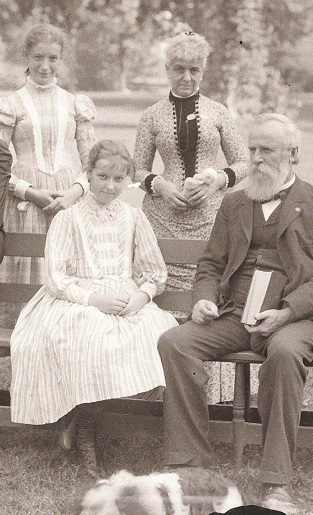 members as guests of the President and Mrs. Hayes that Nellie Taft later recalled her first spark of determination to someday live there as a president's wife. The influence of the Hayes family on her formative years was further increased by not just her father's friendship with the President, but in the years to come when her mother grew especially close to him as a former president. members as guests of the President and Mrs. Hayes that Nellie Taft later recalled her first spark of determination to someday live there as a president's wife. The influence of the Hayes family on her formative years was further increased by not just her father's friendship with the President, but in the years to come when her mother grew especially close to him as a former president.
Marriage:
25 years old, 19 June, 1886, the Herron home, Pike Street, Cincinnati, Ohio, to William Howard Taft (born 15 September 1857, Cincinnati, Ohio), lawyer (died 8 March 1930, Washington, D.C.)
During their courtship, Nellie Herron and Will Taft grew together by a mutual interest and pursuit of intellectual and literary salons she hosted. Nellie Herron was determined not to marry merely for the traditional reasons of starting a family, but also to find a partner who respected and encouraged her interests in current events and issues involving politics and economics. 
Children:
Three children, two sons, one daughter: Robert Taft (8 September 1889 - 31 July 1953); Helen Taft [Manning] (1 August 1891 - 21 February 1987); Charles Taft (20 September 1897 - 24 June 1983)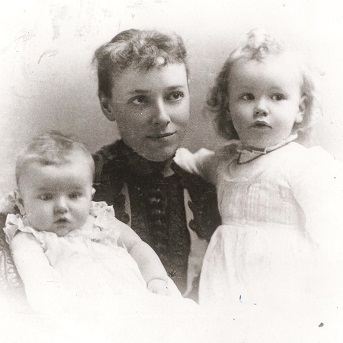
Occupation After Marriage:
Kindergarten teacher, Cincinnati, Ohio 1887-1888: Nellie Taft led her class in art instruction with sewing, drawing, clay molding, etc. She studied the process of early childhood learning in relation to working on art projects. She decided not to take a salary but rather volunteer as her mother-in-law, a founder of the free kindergarten movement in Cincinnati encouraged her to do. When she learned that she was pregnant in January 1889, she did not return to work.
 . .
Cincinnati Symphony Orchestra Association, Cincinnati, Ohio, president, (1893-1900): Nellie Taft helped to found the orchestra and was elected president from her position on the board of directors. Her responsibilities included auditioning, contract negotiations with conductors and musicians, subscription sales, rental of performance hall, fundraising, presiding at board and stockholder meetings, signing all contracts and stock certificates, community outreach, educational programming, delivering an annual report. "I found, at last, a practical method for expressing and making use of my love and knowledge of music," she recalled. She did all this while raising her three children essentially alone, since Taft was largely away from home as circuit court judge.
During the period she worked with the orchestra, Nellie Taft maintained a seemingly impossible ambition. Sparked by a visit to the Hayes White House as a teenager, Nellie Taft had determined as a young woman that, if she married it would be to a man who could be President. She did not believe she could be both married and work as a writer or musician, which were her career ambitions. In Taft she found her opportunity, despite his ambition to be Chief Justice.
During their life in Washington when he served as Solicitor-General (1890), Nellie Taft did all she could to forward her husband's career through social connections, but she feared he was on a judicial rather than executive track.
This was further confirmed when he accepted the offer of President Benjamin Harrison to serve as Federal Circuit Court Judge (1892-1900).
After the Spanish-American War, however, when President William McKinley offered Taft the position of Governor-General (1900-1903) of the recently acquired Philippine Islands, Nellie Taft urged his acceptance and eagerly moved with her family to Manila.

There she started a nutritional program for infants "Drop of Milk". She upset the American military establishment by breaking their previous code of refusing native peoples invitations to social events. Nellie Taft made a concerted effort to learn the language and culture of the various regions of the islands, and showed a respect towards the people of the Philippines that was unheard of from an Anglo-Saxon woman.

She also eagerly urged Taft to accept the offer of President Theodore Roosevelt to become his War Secretary (1904-1909).
Relocating to Washington with her husband, Nellie Taft found her own life as a Cabinet wife dull and demeaning so she threw her energies entirely into helping secure Roosevelt's support for Taft as the Republican presidential candidate in 1908.
In early 1908, Nellie Taft held two unprecedented meetings with President Roosevelt, confronting him on his true motives for suggesting that he would support Taft over the other potential candidates.
Nellie Taft firmly asserted in private letters that Roosevelt wanted another term but that his  rash statement on election night 1904 in which he declared that he would not run again held him back. rash statement on election night 1904 in which he declared that he would not run again held him back.
She believed it was a technicality and that if there was a popular groundswell for his re-nomination that he would abandon his support of Taft and accept the draft as candidate.
Campaign and Inauguration:
Nellie Taft was more thoroughly involved in the political elements of her husband's 1908 campaign than she was at any other point in his career. In dozens of letters, she advised him on how to position himself, sometimes down to what words to use, so that he would be seen as supporting some of Roosevelt's popular policies yet also standing on his own, apart from Roosevelt. Her role was largely hidden from the public, conducted instead through private correspondence or in closed-door meetings. There were, however, occasional newspaper references to her active political role and she appeared as a caricature in a political cartoon illustrating the "Valentine's Day gift" of the Minnesota primary being won by Taft, she being depicted in cap and snowshoes giving him a heart-shaped card.
During the primary and then general election, she feared that the press would learn that she enjoyed playing poker and other card games for money, even on Sundays, and that it might be considered a strike against her husband by those more religious voters who scorned on any type of gambling.

Throughout the Republican Convention in June of 1908, Nellie Taft and her husband kept in close contact with their representatives there; she was certain a stampede for Roosevelt would lead to his spontaneous nomination, instead of it coming to Taft. While Nellie Taft was in attendance at the large "Notification Day" ceremony at the Cincinnati mansion of Taft's brother Charles, when her husband was officially notified of his nomination, she only appeared with him for one leg of his whistlestop campaign, in the autumn of 1908.
Nellie Taft made a permanent mark in history by becoming the first First Lady to ride in the Inaugural Parade with her husband, following the swearing-in ceremony. Many newspapers at the time considered it a symbol of what they assumed to be her support of full suffrage for women. Against the advice of traditionalists, she had decided she would make the ride several days earlier when she learned that outgoing President Roosevelt was opting out of the tradition to accompany his successor back to the White House.

First Lady:
47 years old
4 March 1909 - 4 March 1913
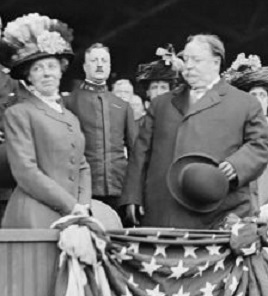
Nellie Taft made immediate and drastic changes to the running of the White House, many of which were intended as much to be politically symbolic as practical.
The most obvious change she made was seen at the time as a positive one for African-Americans. As First Lady, she replaced the all-white male ushers who greeted visitors at the White House with African-American ushers in uniform. Even though "usher" was a position on the domestic staff, it was considered highly prestigious. The white backlash to the move feared by the President's military aide Archie Butt never happened; instead, a New York Times editorial praised her for it.
For her personally, the greatest social event of her tenure as First Lady was the June 1910 Silver Wedding Anniversary party. Among the hundreds of guests were children of former Presidents, members of her original wedding party and leading business, political and religious leaders. The President and Mrs. Taft also received an extraordinary amount of gifts made from silver, the traditional metal used to signify a 25th wedding anniversary. 
In contrast to the social codes of Edith Roosevelt, Nellie Taft widened the chances for different people to attend White House events. She lifted the ban on divorced individuals. Instead of strictly society figures, she invited all members of Congress, as well as their family members, and all ranks of the military stationed in the area. She enlarged the social schedule of dinners to include a season of musical concerts, enabling her to invite even more different individuals. She also refused to hold events on Sundays, encouraging public figures to stay home and enjoy their families. At the large New Year's Day Reception and Easter Egg Roll, she provided refreshments, seats, rest areas, first aid and other services for the thousands of members of the general public who attended.
 Nellie Taft's decision to convert the presidential transportation mode from horse-drawn vehicles to automobiles drew no criticism, although it was not publicly known that she had permitted those car companies that provided a discount to the White House to mention the fact that they used their "machines" in the presidential household. Nellie Taft's decision to convert the presidential transportation mode from horse-drawn vehicles to automobiles drew no criticism, although it was not publicly known that she had permitted those car companies that provided a discount to the White House to mention the fact that they used their "machines" in the presidential household.
After initially telling the Ladies Home Journal that she would serve alcoholic beverages, the First Lady was criticized by prohibitionists, and the President was lobbied by the Women's Christian Temperance Union to change her mind. When an article announced "Punch Bowl Reappears" announced that she was indeed serving her famous "champagne punch" it provoked a new storm of protests. Nellie Taft refused to back down, and was again praised in an editorial.
The great legacy of Nellie Taft's years as First Lady was the creation and development of what is now known as West Potomac Park. Most famously, she brought to reality her vision of the area being surrounded with Japanese cherry blossom trees, which bloomed white and pink flowers every spring. She had been inspired by the Luneta Park in Manila, impressed that all races and levels of society would come together in early evening in the park to attend musical concerts. On 1 April 1909, Nellie Taft drove to a swampy spit of land popular with speeding motorists, known as "the Speedway." Within hours, she had decided where she wanted a massive bandstand built for the Marine Band to conduct twice weekly concerts for the citizenry.
Nellie Taft was soon working with Colonel Spencer Cosby, Public Buildings and Grounds Superintendent, landscape architect George E. Burnap, and gardener George H. Brown in the design of the new park. At her order, the Agriculture Department began uprooting all available cherry blossom trees they could quickly find, sending them to Washington and transplanting them in a single row as Nellie Taft envisioned. Hearing of the plan while in Washington, a Japanese scientist met with her and developed a plan to have the city of Tokyo donate some two thousand of its cherry blossom trees. Although the initial shipment was found to be diseased, and had to be destroyed in December of 1909, the mayor promised a new shipment - this time of some three thousand trees. They arrived in 1910 in clean condition. Nellie Taft, along with the Japanese Ambassador's wife would plant the first two of this shipment on 27 March 1912. They survive to this day.
 The first of the public concerts that Nellie Taft began was held on Saturday, 17 April 1909 and included international music as well as American. The President, Cabinet members, society figures drove to the event in their cars while thousands of members of the public walked or took streetcars. Furthermore, the Filipino Constabulary Band, which she had helped to create while in the Philippines, performed. This band was composed of native Filipinos, and was conducted by a friend of the First Lady, African-American composer and musician Walter Loving. By their presence, the band reflected the strong belief in racial equality of both Will and Nellie Taft. The concerts are still held in the warm weather in Washington, D.C., at the Jefferson Memorial, near where they were originally played. Nellie Taft was successful in getting a $25,000 Congressional appropriation out of Senator Boise Penrose for further improvements in the park. She lead a national effort to raise a memorial on the Potomac River to heroes who perished on the Titanic in 1912. The first of the public concerts that Nellie Taft began was held on Saturday, 17 April 1909 and included international music as well as American. The President, Cabinet members, society figures drove to the event in their cars while thousands of members of the public walked or took streetcars. Furthermore, the Filipino Constabulary Band, which she had helped to create while in the Philippines, performed. This band was composed of native Filipinos, and was conducted by a friend of the First Lady, African-American composer and musician Walter Loving. By their presence, the band reflected the strong belief in racial equality of both Will and Nellie Taft. The concerts are still held in the warm weather in Washington, D.C., at the Jefferson Memorial, near where they were originally played. Nellie Taft was successful in getting a $25,000 Congressional appropriation out of Senator Boise Penrose for further improvements in the park. She lead a national effort to raise a memorial on the Potomac River to heroes who perished on the Titanic in 1912.

For nearly a year before the Inauguration, Nellie Taft had been interested in the work of the National Civic Federation, an organization that brought organized labor and industrial leaders together, the goal being to provide healthier and more equitible living and working conditions for workers without sacrificing productivity. It was one important element of the reforms taking place during the Progressive Era. At the NCF convention in New York, Nellie Taft gave one of her only known speeches, on 15 December 1908. She vowed that she would do all in her power to initiate reform in the federal workplace, providing safe, clean, well-lit conditions. She was unanimously elected NCF's women division honorary national chair. Shortly after, she made inspection tours of cotton mills in North Carolina, where children worked under dangerous conditions.
Just 11 days after becoming First Lady, Nellie Taft held a one-hour meeting with Washington NCF leaders; four weeks later, on 28 April, she met with them for two and a half hours, and the following day met with the large committee for three and a half hours. The upshot was that she made an inspection tour of federal workplace conditions, and successfully solicited pledges from the new Cabinet members to cooperate in the "movement for the betterment" of working conditions for the mostly women employees in each executive department.
 . .
It would take three years, but Nellie Taft's effort would result in the first official federal act initiated by a First Lady to affect a large portion of the Washington working-class. Under the headline "Aided by Mrs. Taft" the 17 March 1912 Washington Post reported that executive order number 1498 provided for Bureau of Public Health inspection of all executive branch government buildings and offices, and to standardize and maintain sanitary and safe conditions. Lighting, plumbing, ventilation, heating, running water were all ordered, even if requiring substantial structural changes to the buildings.
Her public interest would continue; three years later she sat in the front row of congressional hearings into the working conditions at Lawrence, Massachusetts mills where a strike broke out, listening to testimony that included an 11-year old immigrant girl whose hair had been scalped by machinery. While her private sympathies were not always with the striking workers, Nellie Taft's appearances registered great public notice and focused attention on poor working conditions.
Nellie Taft's public appearances were limited after she suffered a stroke on 17 May 1909. The stroke was not devastating, but Nellie Taft did suffer from aphasia, and had to relearn how to speak. With a residual speech impediment, Nellie Taft remained highly self-conscious in public and sought to avoid situations which required lengthy remarks from her. When she was unable to serve as a public hostess, her daughter Helen Taft, and her sisters Jennie Anderson, Eleanor More, and Maria Herron acted in her stead.
It was not just her speech impediment which limited Nellie Taft's interaction with the press. She sought to carefully guard her private life from exposure in the newspaper. Unknown to the public, Nellie Taft smoked cigarettes, played poker and gambled at other games. Although there is not even circumstantial suggestion that she was ever alcoholic, she was a heavy drinker, with a self-proclaimed taste for quality beer and champagne.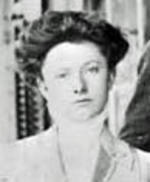
In December 1910, the president's daughter Helen Taft was given a White House debutante party, marking the start of her twenty-seven month stay there. Often termed a "White House hostess," she did not substitute as First Lady after her mother's stroke except in a few situations; more accurately, she was a social aide to her mother. The primary family member who helped re-teach her mother to speak properly, Helen Taft greatly influenced the First Lady. Her superior academic skills earned her a scholarship at Bryn Mawr; it a point of pride for Nellie Taft. The First Lady used it as an example in at least one interview to emphasize her support for higher education for women and their pursuit of professional lives.
In her early months as First Lady, Nellie Taft declared herself a "qualified" suffragist, suggesting that the right to vote should be awarded only to women - and also to men - who could prove a degree of knowledge on the issues and candidates about which and for whom they were voting. Helen Taft, however, was a charter member of Bryn Mawr's Suffrage Club and publicly outspoken activist for factory worker rights. By the end of her tenure, Nellie Taft became an avid supporter of both causes.
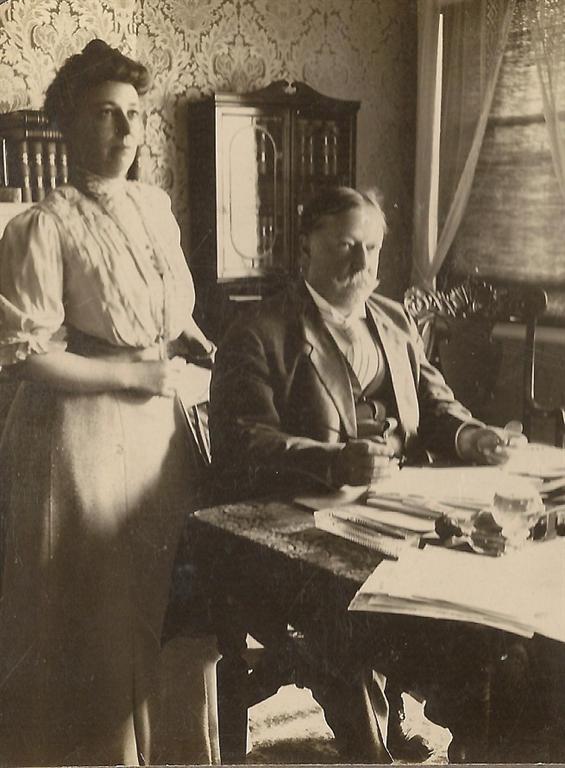 The important political role that Nellie Taft played in helping her husband get elected to the presidency, what she euphemistically termed "an active interest," was not as much in evidence during his Administration. Much of her work during the transition was in vetting potential political appointees but she soon found her own projects, social planning and household management consuming her time. The important political role that Nellie Taft played in helping her husband get elected to the presidency, what she euphemistically termed "an active interest," was not as much in evidence during his Administration. Much of her work during the transition was in vetting potential political appointees but she soon found her own projects, social planning and household management consuming her time.
In the early weeks of the Administration, as Taft fought for a protective tariff that was being debated in Congress, the First Lady made daily news with her presence in the legislature, making note of what was said and by whom. Taft wrote that he had been depending on his wife to help him figure out the tariff rates for various products. She returned to him with detailed notes and was frequently seen joining him in conference with figures such as House Speaker Joseph Cannon.
After her stroke and long convalescence, however, the President was hesitant about confiding political problems to her, fearing the effect on her nervous system. As a consequence, his poor judgment in how to publicly position issues led to a perception of him as more pro-business than Roosevelt - when in fact, Taft instituted more anti-trust suits.
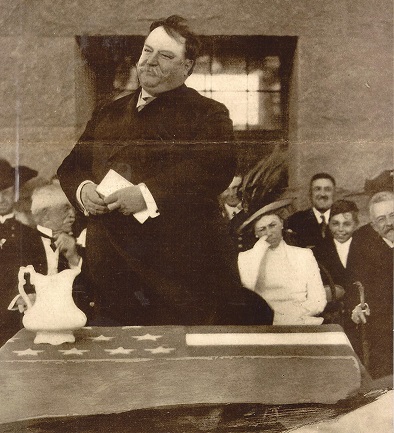 Public relations were a particular strength of Nellie Taft, and her husband's presidency was damaged by her absent advice. She did bring specific problems to him that she wished to have moved forward - such as a request to help an African-American teacher to create a kindergarten system in the South for African-American children similar to those that wealthier, white American children enjoyed. Public relations were a particular strength of Nellie Taft, and her husband's presidency was damaged by her absent advice. She did bring specific problems to him that she wished to have moved forward - such as a request to help an African-American teacher to create a kindergarten system in the South for African-American children similar to those that wealthier, white American children enjoyed.
She exercised an equal influence with Cabinet members on individual situations that appealed to her (in one case interceding at the last minute to stop a Jewish immigrant boy who had a learning disability from being wrongly deported) as well as members of Congress (an example being her support of a pension for Confederate widows).
 Much about Nellie Taft's influence leaked to the press and there was a widespread perception of her as one of the most highly political First Ladies in history. Her political sagacity proved itself when, as she predicted, former President Theodore Roosevelt challenged his old friend for the Republican presidential nomination in 1912 and then, when he lost it to Taft, running as a third party candidate. Much about Nellie Taft's influence leaked to the press and there was a widespread perception of her as one of the most highly political First Ladies in history. Her political sagacity proved itself when, as she predicted, former President Theodore Roosevelt challenged his old friend for the Republican presidential nomination in 1912 and then, when he lost it to Taft, running as a third party candidate.
In July 1912, Nellie Taft again broke precedent when she attended the National Democratic Convention in Baltimore, becoming not only the first incumbent First Lady to attend a convention, but the only one to ever attend that of the opposition party. Although Taft was defeated by Democrat Woodrow Wilson, it was a partial success to Nellie Taft: her ambition as Election Day neared was to see Roosevelt defeated.
The day before she left the White House, Nellie Taft's general sympathy for eventually granting all American women the right to vote made itself known: she ascended to a prominent place on a grandstand to review a parade of suffragists and encourage their demand of the incoming president to support a woman's right to vote.

Life After the White House:
Greatly depressed at the loss of her husband's election, Nellie Taft moved with him to New Haven, Connecticut where he began teaching law at Yale University. She soon began work on her own memoirs, published in 1914. Recollection of Full Years was the first memoirs published by a First Lady. She eventually came to support full suffrage for women. She closely followed the career of her daughter, who went on to earn a Ph.D., rising through the ranks of academia to become the president of Bryn Mawr University. During World War I, she kept abreast of the U.S. troop involvements through letters from her son Charles, who had volunteered as a private, and her sister Maria Herron, who volunteered as a Red Cross nurse at the front. Nellie Taft made at least one speech during this time.
She was an avid supporter, with her husband, of the League of Nations despite the fact that it was largely opposed by Republican leadership in the U.S. Senate. Through her many trips to New York City, Nellie Taft also developed a great love of theater, often going several times a week and becoming something of an expert critic on numerous productions, as illustrated in her reviews in letters to her family.
In 1921, when William Howard Taft was nominated and confirmed as the Chief Justice of the Supreme Court by the Harding Administration, Nellie Taft was relieved to return to Washington, D.C. Despite the fact that her husband was the highest-ranking judicial figure in the nation, Nellie Taft rejected the Prohibition laws, often arguing with Taft over it; when they were in the U.S. Embassy in England she indulged in liquor - on what was technically American soil. She had a taste for some of the more scandalous "sex plays" of the 1920's and risked being part of an audience raid. Nellie Taft came to enjoy going to the movies, following the Charlie Chan series, for example
Although she annually made an overseas trip, when Taft's heart condition weakened, she remained at his side until his 1931 death. As a widow, Nellie Taft resumed her global travels - exploring Egypt on a donkey, taking buses in London, drinking beer in Mexico, sailing to the South Sea Islands, roaming the dark streets of her favorite place, Naples, Italy. In the U.S. she developed a pattern of staying in Charleston, South Carolina in the late winter and early spring, returning to Washington, spending her summers and early autumn at the family home in Quebec, and then back to Washington. She rarely returned to her home of Cincinnati and when she did it was usually for the city's May Festival or other music-related events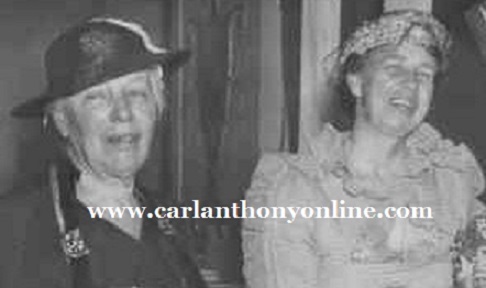 . .
Although she remained a loyal Republican, particularly supportive of Herbert and Lou Hoover, she also attended several events to meet Eleanor Roosevelt, including a tribute.
After son Charlie Taft took a job with the Roosevelt Administration, Nellie Taft was alleged to have told a reporter in Mexico that she supported FDR in his bid for a second term, in 1936. Her other son, Robert Taft, then a Republican U.S. Senator, quickly issued a statement denying that she had done so. When her son ran for the Republican nomination in 1940, Nellie Taft attended the Philadelphia convention and loyally supported him. However, she also signed a public letter with other women, including FDR's mother, Sara Roosevelt, calling on Republican Senators - including her son - to permit Roosevelt's war-preparedness legislation to come to the Senate floor for a vote.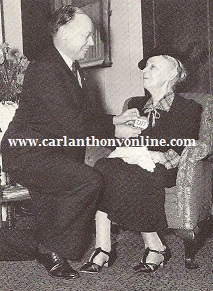
Death:
81 years old
22 May 1943
Washington, D.C.
Burial:
Arlington National Cemetery
Washington, D.C.
Nellie Taft is the first of two First Ladies buried at Arlington National Cemetery. The other is Jacqueline Kennedy Onassis.
|